No gardener wants to see yellow leaves on their cannabis plant. Withering plants in the nursery are a miserable sight. Unfortunately, not every cannabis crop grows easily. This can be due to incalculable reasons. It can be anything from breeder errors to incorrect pH. Of course, we cannot offer you a surefire solution for every potential cannabis plant disease. We are cannabis writers, not psychics. Additionally, just before harvest, it is quite normal for the leaves to change colour a bit or even fall off, as the plant puts all of its energy into flowering.
But we can certainly help you. Specifically, to properly identify most of the common causes of yellow leaves. We’ve also included helpful tips on treating diseased plants. There are also simple professional tips and tricks. Any do-it-yourselfer can implement our advice to avoid turning yellow leaves on cannabis plants.
The right diagnosis is crucial
The very first step is an accurate diagnosis. What is causing the yellow leaves to spoil your cannabis plants? Chlorosis in normal, decent growing conditions means the loss of chlorophyll. In order to use the treatment effectively, you need to know what you are dealing with. Don’t jump to conclusions and don’t panic. The leaves are like solar panels for your cannabis plant. They are essential for photosynthesis. Removing all yellow leaves is not a recommended action, especially for young plants. Properly identifying the cause of the problem and taking quick remedial action can restore marijuana.
Senescence is when plants naturally yellow and die. Don’t worry about the last few weeks of flowering. Leaf fall and yellowing are increasing. Flushing plants with pure water or a flushing solution at the end of flowering also rids the medium of residual nutrients and often yellows the leaves.
The most common causes of yellow leaves on cannabis plants
The following is not a complete list of the causes of chlorosis. It’s such a common symptom we could write a book about it. We’ve focused on the most common causes of yellow leaves based on first-hand experience from professional crops. If you are currently looking for a solution to chlorosis, read the next few sections carefully. Your plant might be very happy about this.
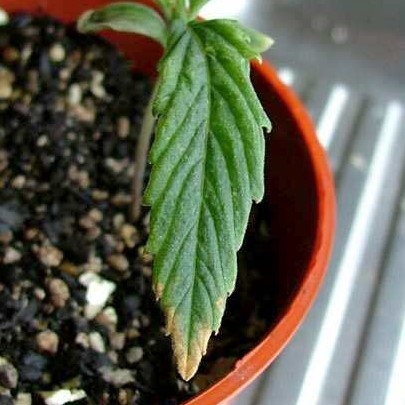
1. Overfertilization – Nutrient Burn
Cannabis plants need exactly the right nutrients at the right time. Read the dosage instructions on the label of each fertilizer bottle before adding it to the water. Additionally, we highly recommend you visit the nutrient brand’s website, which features custom charts and feeding schedules.
SOLUTION: As you may have guessed, start the treatment with a clean water rinse. This is followed by the manufacturer’s recommended dose in the respective growth/flowering phase. A good rule of thumb is to gradually increase doses and monitor plant behaviour before increasing the concentration of the solution any further
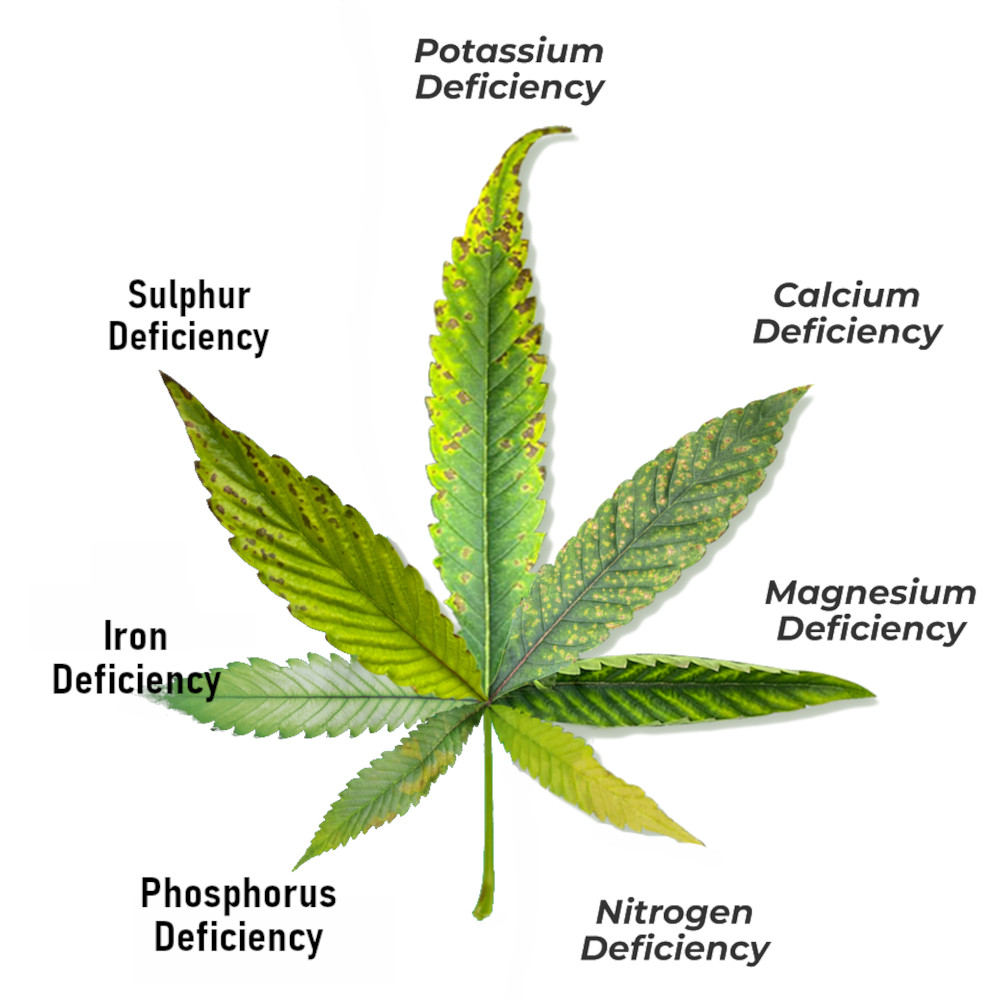
2. Nutrient Deficiency
Nutrient deficiencies in growing cannabis plants can happen especially if you are a new grower and don’t know how to fertilize cannabis plants properly. Choose a nutrient setup that is designed for growing cannabis, they are available online and at your local grow shop.
Soil is more forgiving to nutrient deficiencies than hydro so if it’s your first time growing cannabis it’s best to use soil. Or do a ton of research ahead of time if you have your heart set on using hydroponics or aeroponics.
SOLUTION: Add more nutrients with your next watering focusing on the deficiency you see. Be sure to buy the right option for the growing medium you are using. If you are growing organically in soil, mulching with organic materials, such as manure or compost. Compost tea can help with a quick boost in the needed nutrients.
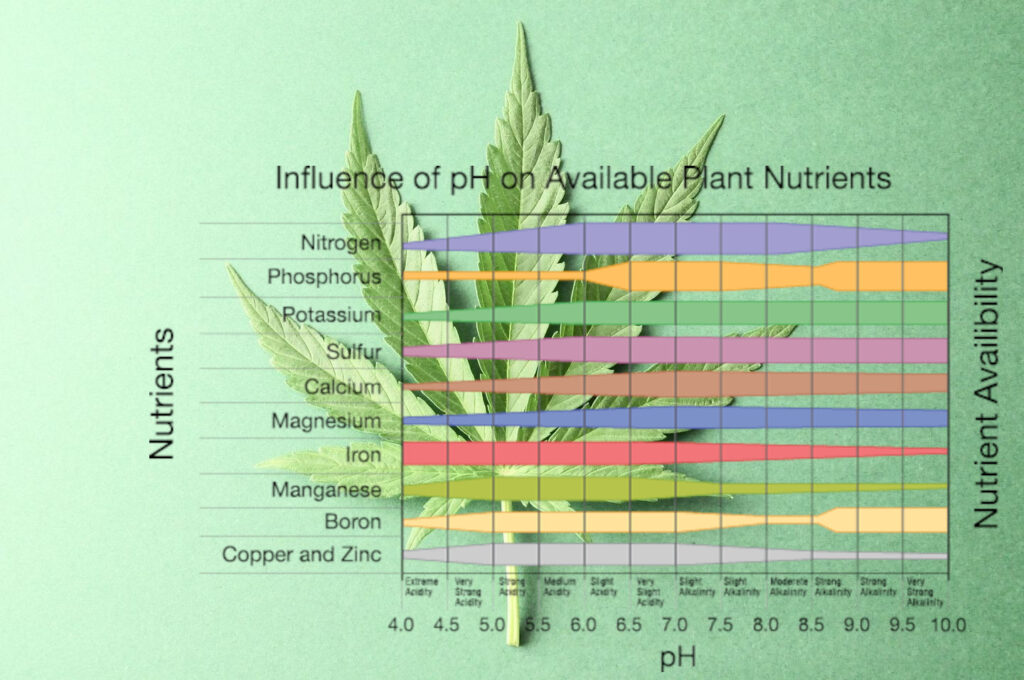
3. Wrong pH value
Cannabis growers that use soil to grow with have the advantage of cultivating in a medium that acts as a buffer for roots. Hydroponics and coco aren’t quite as good at fighting pH imbalances. Even soil growers need to at least get close to and maintain the ideal pH of 6.0-7.0 or the plants will suffer. 5.5 to 6.5 pH is generally agreed as the recommended range for hydro and coco. Yellow leaves can be a warning sign that you haven’t dosed your nutrients properly and the pH isn’t ideal.
When the pH of your nutrient solution is above or below the specific sweet spot for your substrate, it essentially prevents all elements of the solution from being fully assimilated. The roots are starved of certain nutrients and micronutrients as the wrong pH level causes a lockout.
SOLUTION: Invest in a pH pen or cannabis fertilizer with pH-perfect solutions that can automatically set a wider pH range. Rinse the plants with pure water, then continue “feeding” with a light solution tailored to your growing medium. Make sure the basic nutrients you use contain all the essential trace elements, otherwise you’ll have to budget for extra bottles of fertilizer.
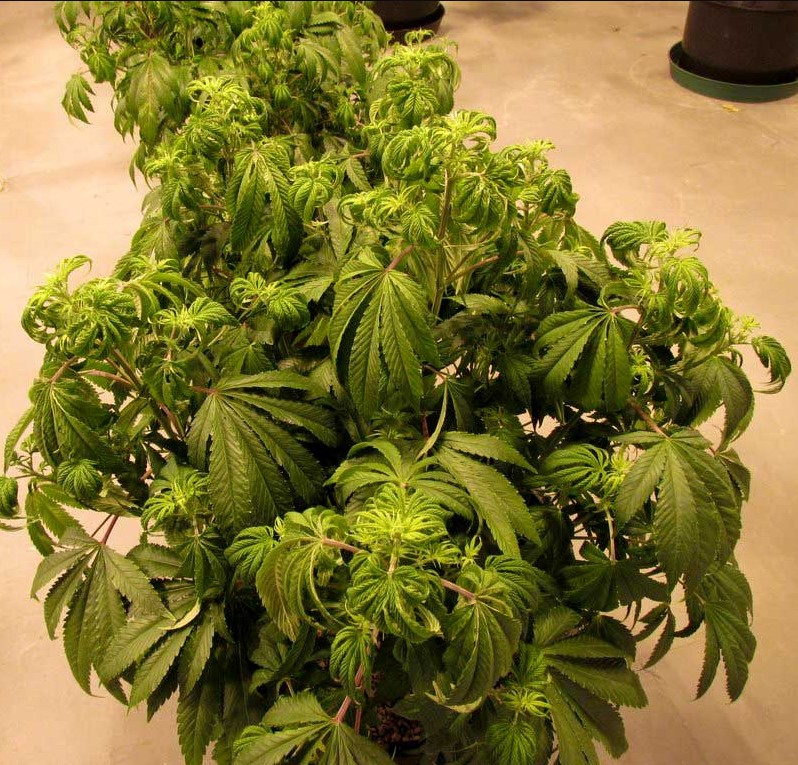
4. Overwatering or underwatering
Cannabis plants will only thrive with an effective wet and dry cycle. This means you need to water the right amount at the right time every time you water. So what’s the best way to tell if your cannabis is thirsty? Lift the pots when they are dry. Then again after watering so you can tell the difference. Alternatively, you can buy a moisture meter to put in the pot. Hydro gardeners need to ensure pumps, air stones, tanks and timers are set correctly from the start.
SOLUTION: Monitor the plant’s behaviour closely after watering. Use any of the above measures to more accurately measure when to water to prevent a recurrence. Too much water can lead to root rot. Too little water disrupts growth. If necessary, keep a grow diary and try to gain experience as growth progresses.
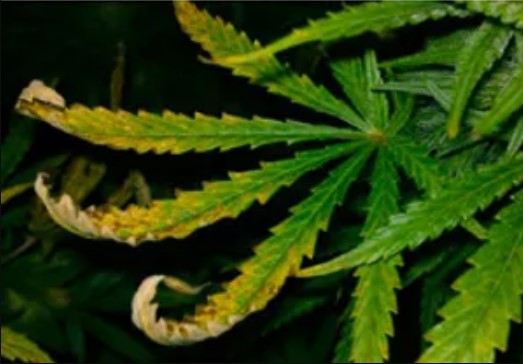
5. Burns from light
Indoor cannabis plants grown under artificial lights need to be perfectly positioned and the lights need to be just the right distance above the canopy for best results. If lamps and reflectors are too close to the flowering tops, buds and leaves will turn yellow and brown because the light is too intense.
In contrast, too little light is usually a problem that is most clearly visible from the bottom up. Lack of light will cause shaded leaves or leaves that are too far below the light transmittance of the lamp to yellow and fall off.
SOLUTION: Make sure you hang your grow lights according to the manufacturer’s instructions. Set them to the progress of the plants and use a gauge for accuracy. There are so many new lighting technologies on the market today with their own nuances of colour that you really have to follow the manufacturer’s guidelines to position the light in the sweet spot. LED lamps develop significantly less heat and may be a possible solution to the problem.
